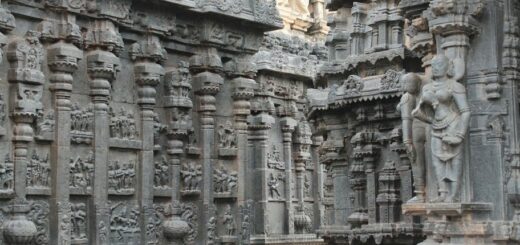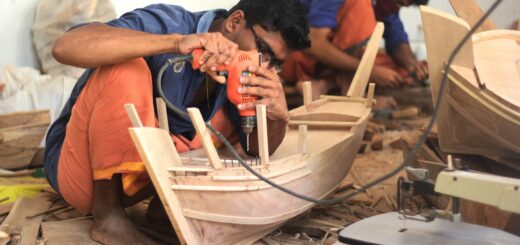Ministry of Women And Child Development
by
Mentors4ias
·
April 1, 2019
Beti Bachao Beti Padhao
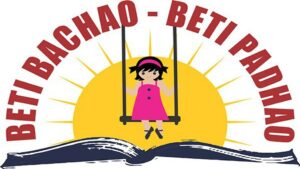
- It is a tri-ministerial effort of Ministries of Women and Child Development, Health & Family Welfare and Human Resource Development.
Objectives include:
- Prevent gender biased sex selective elimination
- Ensure survival & protection of the girl child
- Ensure education of the girl child
Strategies:
- Implement a sustained Social Mobilization and Communication Campaign to create equal value for the girl child & promote her education.
- Place the issue of decline in CSR/SRB in public discourse, improvement of which would be a indicator for good governance.
- Focus on Gender Critical Districts and Cities low on CSR for intensive & integrated action.
- Mobilize & Train Panchayati Raj Institutions/Urban local bodies/ Grassroot workers as catalysts for social change, in partnership with local community/women’s/youth groups.
- Ensure service delivery structures/schemes & programmes are sufficiently responsive to issues of gender and children’s rights.
- Enable Inter-sectoral and inter-institutional convergence at District/Block/Grassroot levels.
Components of the scheme:
- Two components under the scheme include
- Advocacy and Media Campaign on Beti Bachao-Beti Padhao
- Multi-Sectoral intervention in selected Gender Critical Districts worse on CSR
- A sustained social mobilization and communication campaign to create equal value for the girl child & promote her education.
- Enable inter-sectoral and inter-institutional convergence at district/block/grassroot levels. It’s a Pan India Scheme, with 100% assistance from Central Government
- It has no provision for individual cash transfer.
Monitor able targets include:
- Improve the Sex Ratio at Birth (SRB) in selected gender critical districts by 2 points in a year.
- Reduce Gender differentials in Under Five Child Mortality Rate from 7 points in 2014(latest available SRS report) to 1.5 points per year
- At least 5 % increase per year of Institutional Deliveries.
- Increase enrolment of girls in secondary education to 82% by 2018-19.
- Provide functional toilet for girls in every school in selected districts.
- Improve the Nutrition status of girls – by reducing number of underweight and anemic girls under 5 years of age.
- Ensure universalization of ICDS
- Promote a protective environment for Girl Children through implementation of Protection of Children from Sexual Offences (POCSO) Act 2012.
- Train Elected Representatives/ Grassroot functionaries as Community Champions to mobilize communities to improve CSR and promote Girl’s education.
- Digital Guddi-Gudda Board’ is a platform for dissemination of Information, Education and Communication (IEC) Material on BBBP and to update monthly birth statistics. It has been adopted as a Best Practice under Beti Bachao Beti Padhao (BBBP) scheme by The Union Ministry of Women and Child Development.
Sukanya Samriddhi Yojna
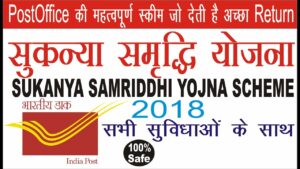
- Sukanya Samriddhi Yojna’ is a small deposit scheme for girl child, launched as a part of the ‘Beti Bachao Beti Padhao’ campaign, which would fetch an attractive interest rate and provide income tax rebate.
- ‘Sukanya Samriddhi Account’ can be opened at any time from the birth of a girl child till she attains the age of 10 years, with a minimum deposit of Rs 250. A maximum of Rs 1.5 lakh can be deposited during a financial year.
- The account can be opened in any post office or authorised branches of commercial banks.
- The scheme primarily ensures equitable share to a girl child in resources and savings of a family in which she is generally discriminated as against a male child.
- In an effort to motivate parents to open an account in the name of a girl child and for her welfare to deposit maximum of their savings upto the prescribed limits, higher rates of interest is given on the deposits on annually compounded basis with income tax concession.
- The account will remain operative for 21 years from the date of opening of the account or marriage of the girl child after attaining 18 years of age.
- To meet the requirement of higher education expenses, partial withdrawal of 50 per cent of the balance would be allowed after the girl child has attended 18 years of age.
- The provision of not allowing withdrawal from the account till the age of 18 has been kept to prevent early marriage of girls.
Swadhar Greh
- The scheme envisions a supportive institutional framework for women victims of difficult circumstances so that they could lead their life with dignity and conviction.
- It envisages that shelter, food, clothing, and health as well as economic and social security are assured for such women.
- It also envisions that the special needs of these women are properly taken care of and under no circumstances they should be left unattended or abandoned which could lead to their exploitation and desolation.
The benefit of the component could be availed by women above 18 years of age of the following categories:
- Women who are deserted and are without any social and economic support;
- Women survivors of natural disasters who have been rendered homeless and are without any social and economic support;
- Women prisoners released from jail and are without family, social and economic support;
- Women victims of domestic violence, family tension or discord, who are made to leave their homes without any means of subsistence and have no special protection from exploitation and/ or facing litigation on account of marital disputes; and
- Trafficked women/girls rescued or runaway from brothels or other places where they face exploitation and Women affected by HIV/AIDS who do not have any social or economic support. However such women/ girls should first seek assistance under UJJAWALA Scheme in areas where it is in operation.
UJJAWALA Scheme
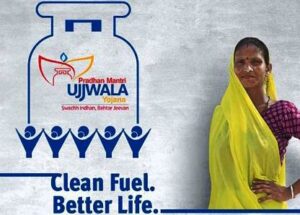
- The scheme is intended for prevention of trafficking and rescue, rehabilitation, reintegration and repatriation of cross-border victims to their country of origin.
- Women and children who are vulnerable and victims to human trafficking will be the beneficiaries of the scheme.
Salient features include:
- Rehabilitative centres are given financial support for providing shelter and basic amenities such as: Food, clothing, medical care, legal aid
- Education in the case the victims are children, Vocational training and income generation activities to provide the victims with alternate livelihood option.
Rajiv Gandhi Scheme for Empowerment of Adolescent Boys – “Saksham”
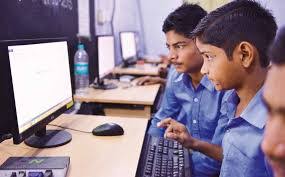
- The scheme is intended for All-round development of Adolescent Boys (ABs) to make them self-reliant, gender-sensitive and aware citizens.
- Adolescent boys (both school going and out of school) in the age-group of 11 to 18 years will be covered under the scheme.
Features of the scheme includes:
- Address the health needs– physical, mental and emotional- of boys and promote awareness of hygiene, nutrition and sexual and reproductive health.
- Provide vocational skills to those aged above 16 years through the National Skill Development Program (NSDP)
- The structures under the Integrated Child Development Services Scheme (ICDS) will be utilised as a platform. This will be supported by a dedicated Saksham unit/cell created at the Centre and in the State, district and block levels.
Gender Champion Scheme
- It’s a collaborative effort of Ministry of Women and Child Development (MWCD) and Ministry of Human Resource Development.
Objectives of the scheme include:
- To make young boys and girls gender sensitive and create positive social norms which value the rights of women and girls.
- Gender Champions can be both boys and girls above 16 years of age enrolled in educational institutions.
- Gender Champions are envisaged as responsible leaders who will facilitate an enabling environment within their schools/colleges/ academic institutions where girls are treated with dignity and respect.
- Scheme will strengthen the potential of young girls and boys to advocate for gender equality and monitor progress towards gender justice.
Sakhi One Stop Centres
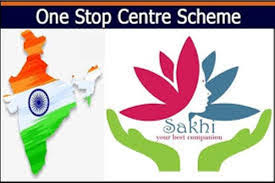
- The scheme is intended to provide integrated support and assistance to women affected by violence, in private and public spaces, within the family, community and at the workplace under one roof.
- To facilitate immediate, emergency and non – emergency access to a range of services including medical, legal, psychological and counselling support under one roof to fight against any forms of violence against women.
- All women including girls below 18 years of age affected by violence, irrespective of caste, class, religion, region, sexual orientation or marital status are the intended beneficiaries.
- It’s funded through Nirbhaya Fund. The Central Government provide 100% financial assistance to the State Government /UT Administrations under the Scheme.
- Implementing Agency will be: State Government/ UT Administration.
Mahila E-Haat
- It’s an online marketing platform for women.
- Beneficiary:All Indian women citizens more than 18 years of age and women SHGs.
- It’s an initiative for meeting aspirations and need of women entrepreneurs which will leverage technology for showcasing products made/manufactured/sold by women entrepreneurs.
- It has been set up with an investment of under Rs.10 lakh from the Rashtriya Mahila Kosh—an autonomous body under the WCD ministry for the socio-economic empowerment of women.
Pradhan Mantri Mahila Shakti Kendra (PMMSK)
- Provides an interface for rural women to approach the government for availing their entitlements and for empowering them through training and capacity building.
- PMMSK Block level initiatives: Under it, community engagement is envisioned in 115 most backward districts through Student Volunteers.
- It will provide an opportunity to Student Volunteers to participate in the nation development process and bring gender equality in backward district
NARI portal
- Due to scattered information on various women centric schemes/legislations there is a lack of awareness among people regarding the same.
- To address this problem government launched NARI portal as a single window access to information and services on various women centric schemes/legislations
E-Samvaad Portal
- It is a platform for NGOs and civil society to interact with the Ministry of Women and Child Development (MWCD) by providing their feedback, suggestions, put up grievances, share best practices etc.
Jan Sampark program
- Aim: To enable the public to have interaction with its officials and staff for seeking information related to Adoption as well as flagging their concerns. • Launched by Central Adoption Resource Authority (CARA) of the Ministry of Women & Child Development • It will serve as platform for counselling and motivating Prospective Adoptive Parents (PAPs) to go for adopting older children.
Support to Training and Employment Programme for Women (STEP)
- The STEP Scheme aims to provide skills that give employability to women and to provide competencies and skill that enable women to become self-employed/entrepreneurs.
- The Scheme is intended to benefit women who are in the age group of 16 years and above across the country. The grant under the Scheme is given to an institution/ organisation including NGOs directly and not the States/ UTs.
- The assistance under STEP Scheme will be available in any sector for imparting skills related to employability and entrepreneurship, including but not limited to the Agriculture, Horticulture, Food Processing, Handlooms, Tailoring, Stitching, Embroidery, Zari etc, Handicrafts, Computer & IT enable services along with soft skills and skills for the work place such as spoken English, Gems & Jewellery, Travel & Tourism, Hospitality.
Integrated Child Development scheme
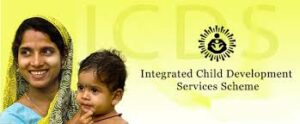
- The Integrated Child Development Service (ICDS) Scheme providing for supplementary nutrition, immunization and pre-school education to the children is a popular flagship programme of the government. It is one of the world’s largest programs providing for an integrated package of services for the holistic development of the child. ICDS is a centrally sponsored scheme implemented by state governments and union territories.
Objectives:
- To prevent and reduce young child under-nutrition (% underweight children 0-3 years) by 10 percentage points
- To lay the foundation for proper psychological, physical and social development of the child
- To reduce the incidence of mortality, morbidity, malnutrition and school dropout
- To achieve effective co-ordination of policy and implementation amongst the various departments to promote child development;
- To enhance the capability of the mother to look after the normal health and nutritional needs of the child through proper nutrition and health education.
Features of the Scheme:
- It is a centrally sponsored scheme
- Engaging anganwadi worker and helper from the same village
- It is a universal and self-selecting schemee. anyone can visit to the Aanganwadi centre and enroll these services.
- Package of six services i.e. Supplementary nutrition programme ,Pre-school education oHealth and nutrition education, Immunization, Health check up and Referral services to the beneficiaries
Sub-Schemes under Umbrella ICDS
- Anganwadi Services: It is for holistic development of children under the age of 6 year and pregnant and lactating women.
- Child Protection Services: It aims to provide safe and secure environment for children in conflict with law and children in need of care and protection and reduce vulnerabilities.
- National Crèche Services:It aims to provide a safe place for children of working mothers while they are at work. Thus, empowering them to take up employment.
- Pradhan Mantri Matru Vandana Yojana
- Poshan Abhiyan
- Scheme for Adolescent Girls
Pradhan Mantri Matru Vandana Yojana

- The scheme is intended for providing partial compensation for the wage loss in terms of cash incentive s so that the woman can take adequate rest before and after delivery of the first living child.
- The cash incentive provided would lead to improved health seeking behaviour amongst the Pregnant Women and Lactating Mothers (PW& LM).
- All Pregnant Women and Lactating Mothers, excluding PW&LM who are in regular employment with the Central Government or the State Governments or PSUs or those who are in receipt of similar benefits under any law for the time being in force are the intended beneficiaries.
- Cash incentive of Rs 5000 in three instalments i.e. 1 st instalment of Rs 1000/ – on early registration of pregnancy, 2nd instalment of Rs 2000/ – after six months of pregnancy and 3rd instalment of Rs 2000/ – after child birth is registered and the child has received the first cycle of BCG, OPV, DPT and Hepatitis – B, or its equivalent/ substitute.
- The eligible beneficiaries would receive the incentive given under the Janani Suraksha Yojana (JSY) for Institutional delivery and the incentive received under JSY would be accounted towards maternity benefits so that on an average a woman gets Rs 6000 / – • Universal screening of pregnant women for Anaemia and Iron and Folic Acid (IFA) supplementation, Calcium supplementation in pregnancy, Deworming in pregnancy.
Poshan Abhiyan
- It is a flagship programme which would be executed with the Ministry of Women and Child Development (WCD) as the nodal ministry along with Ministry of Drinking Water and Sanitation and Ministry of Health and Family Welfare which ensures convergence with various programmes.
- The mission has a target to reduce stunting, undernutrition, and low birth weigh by 2 per cent per annum, and anaemia by 3 per cent annually.
- It aims to focus mainly on children up to the age of 6 years, pregnant and lactating women, and adolescent girls.
- It would also strive to achieve reduction in stunting from 38.4% (NFHS-4) to 25% by 2022 (Mission 25 by 2022).
- It will be implemented in three phases: 2017-18, 2018-19 and 2019-20. 315 ‘high burden’ are to be covered in the first phase, 235 in next and the remaining in last.
- National Nutrition Mission as an apex body will monitor, supervise, fix targets and guide the nutrition related interventions through the life cycle concept.
Scheme for Adolescent Girls
Objectives of the scheme:
- Enable the adolescent girls for self-development and empowerment
- Improve their nutrition and health status.
- Promote awareness about health, hygiene, nutrition, adolescent reproductive and sexual health (ARSH) and family and child care.
- To educate, skill and make them ready for life’s challenges.
- Adolescent girls (11–18 years old under all icds projects in selected 200 districts in all states/UTs in the country) are the intended beneficiaries.
Salient features of the scheme:
- Nutrition provision
- Iron and folic acid (IFA) supplementation
- Health check-up and referral services
- Nutrition & health education (NHE)
- Counseling/guidance on family welfare, ARSH, child care practices and home management.
- Upgrade home-based skills, life skills and integrate with the national skill development program (NSDP) for vocational skills.
- Mainstream out of school adolescent girls into formal/non-formal education.
- Provide information/guidance about existing public services such as PHC, CHC, post office, bank, police station, etc





Tags: iasimportant notes for upscIpsmentors4iiasstudy materialsupsc
You may also like...








